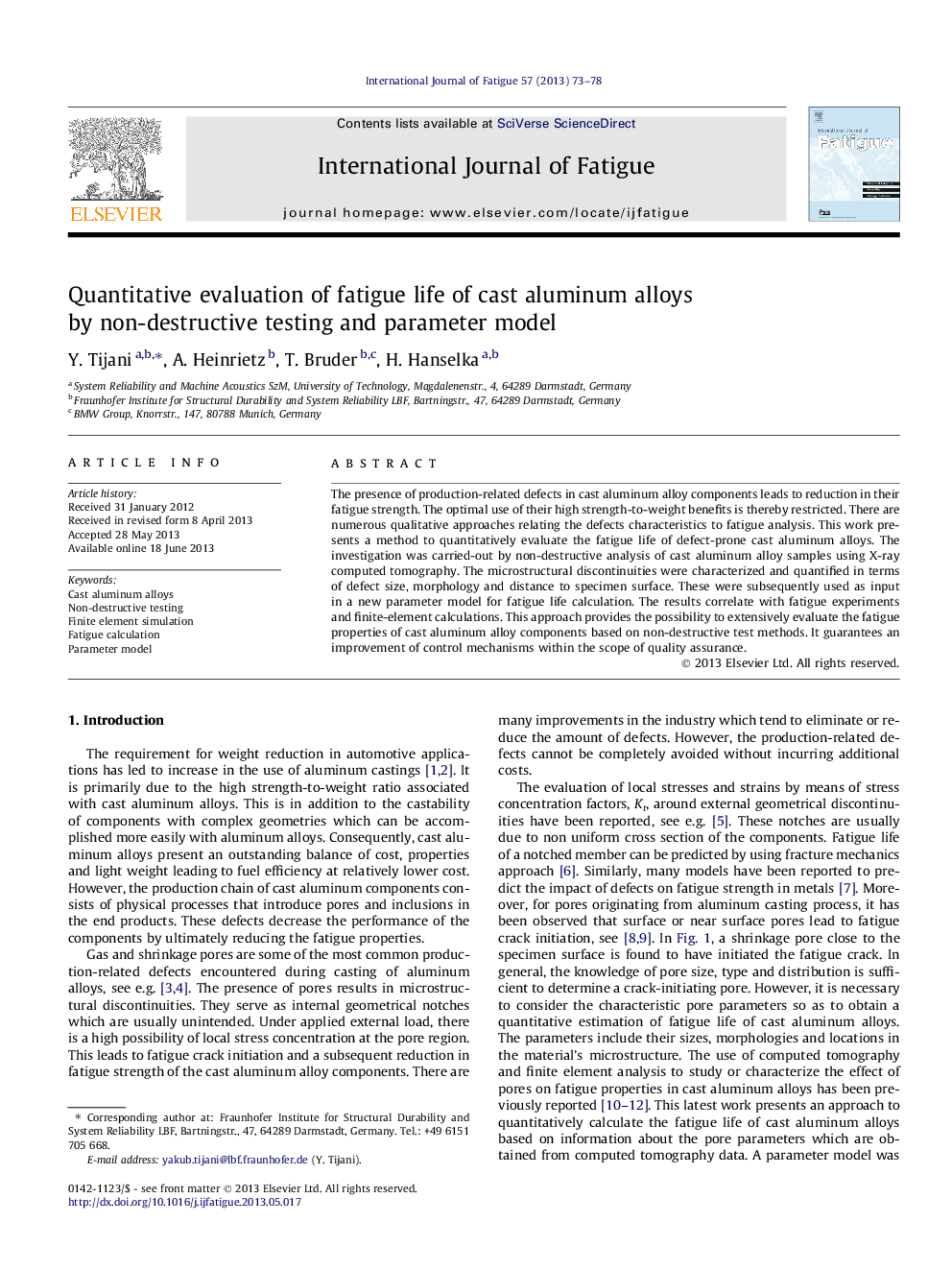| کد مقاله | کد نشریه | سال انتشار | مقاله انگلیسی | نسخه تمام متن |
|---|---|---|---|---|
| 780829 | 1463775 | 2013 | 6 صفحه PDF | دانلود رایگان |

• We model the influence of gas and shrinkage pores on cast aluminum alloys.
• We develop a method to quantify the fatigue life of samples from cast aluminum alloys.
• The impact of any cast defect depends on its size, shape and location in the microstructure.
• Fatigue behavior can be determined by non-destructive testing.
The presence of production-related defects in cast aluminum alloy components leads to reduction in their fatigue strength. The optimal use of their high strength-to-weight benefits is thereby restricted. There are numerous qualitative approaches relating the defects characteristics to fatigue analysis. This work presents a method to quantitatively evaluate the fatigue life of defect-prone cast aluminum alloys. The investigation was carried-out by non-destructive analysis of cast aluminum alloy samples using X-ray computed tomography. The microstructural discontinuities were characterized and quantified in terms of defect size, morphology and distance to specimen surface. These were subsequently used as input in a new parameter model for fatigue life calculation. The results correlate with fatigue experiments and finite-element calculations. This approach provides the possibility to extensively evaluate the fatigue properties of cast aluminum alloy components based on non-destructive test methods. It guarantees an improvement of control mechanisms within the scope of quality assurance.
Journal: International Journal of Fatigue - Volume 57, December 2013, Pages 73–78